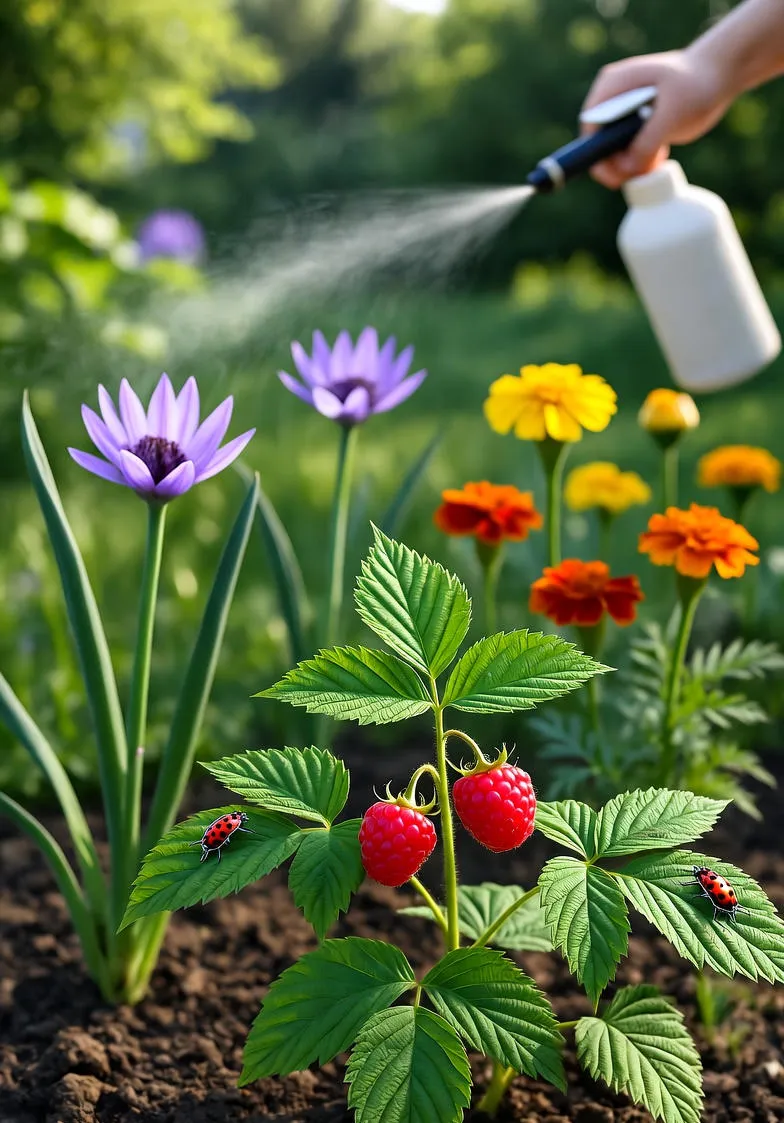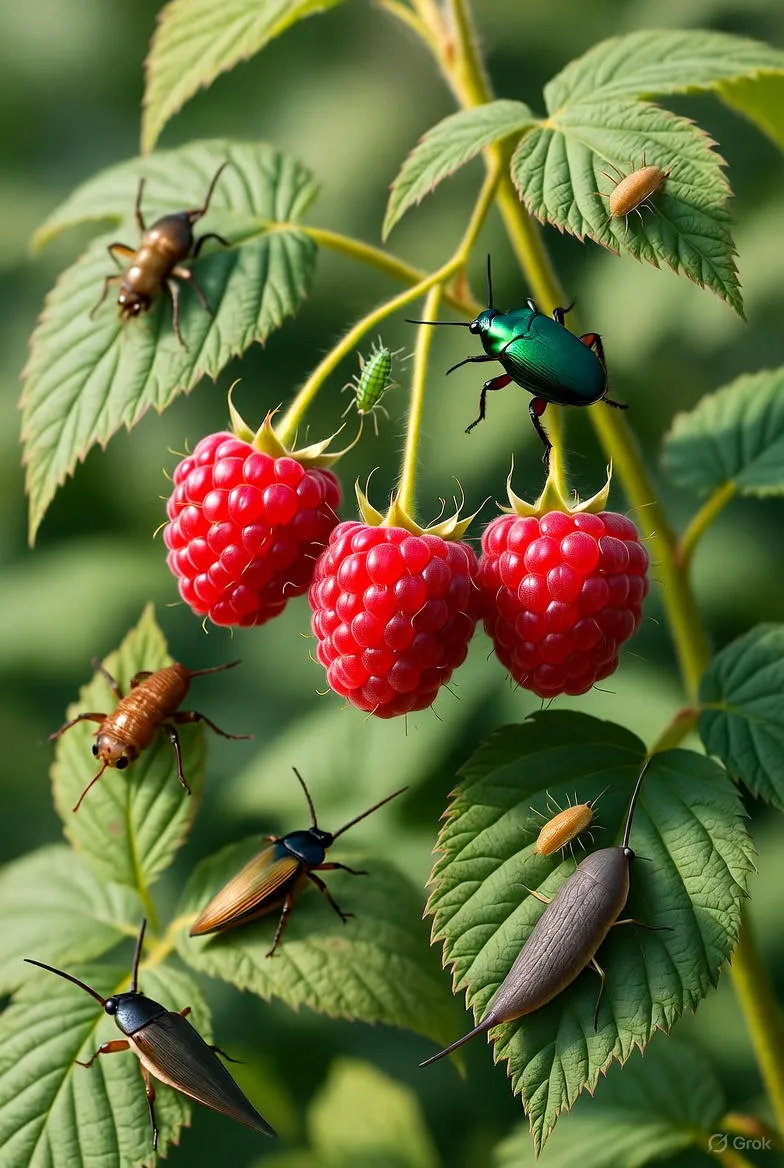Battling Raspberry Pests Naturally: Effective Organic Solutions for a Bountiful Harvest
Explore common raspberry pests like aphids, Japanese beetles, and spider mites, plus effective natural solutions such as companion planting, neem oil sprays, and beneficial insects for organic berry protection.

Introduction to Raspberry Pests and Why Natural Solutions Matter
Raspberries are a delightful addition to any home garden, offering sweet, juicy berries that burst with flavor. These versatile plants thrive in many climates, providing fresh fruit for jams, desserts, and healthy snacks. However, like many fruit crops, raspberries are prone to pest infestations that can compromise yields and plant health. Common culprits include aphids, Japanese beetles, spider mites, and fruitworms, which can quickly turn a promising harvest into a disappointment.
Opting for natural solutions over chemical pesticides is not only kinder to the environment but also safer for beneficial insects, pollinators, and your family. Organic methods promote a balanced ecosystem in your garden, where natural predators keep pest populations in check. By integrating prevention, cultural practices, and targeted remedies, you can protect your raspberry patch sustainably. This article explores the most prevalent raspberry pests, their signs of damage, and proven natural control strategies to help you maintain thriving plants.
Understanding Common Raspberry Pests
Identifying pests early is crucial for effective management. Regular inspections—checking leaves, stems, and fruits weekly—allow you to intervene before damage spreads. Below, we detail key raspberry pests and how to spot them.
Aphids: Tiny Sap-Suckers
Aphids are small, soft-bodied insects, often green, yellow, or black, that cluster on new growth, leaf undersides, and tender stems. They feed by piercing plant tissues and sucking sap, causing leaves to curl, yellow, and distort. Sticky honeydew residue from their excretions can attract ants and lead to sooty mold. Severe infestations weaken plants, stunting growth and reducing fruit production.
Japanese Beetles: Voracious Leaf Eaters
These metallic green and copper-colored beetles emerge in early summer, skeletonizing leaves by eating the tissue between veins. Adults also nibble on flowers and berries, while their white grubs feed on roots underground, damaging the plant's foundation. Look for wilting foliage and irregular holes as telltale signs.
Spider Mites: Invisible Web-Weavers
Hardly visible to the naked eye, spider mites are tiny arachnids that thrive in hot, dry conditions. They suck sap from leaf undersides, creating fine white webs and stippled, yellowing leaves. In high tunnels or during droughts, populations explode, leading to leaf drop and reduced photosynthesis.
Spotted Wing Drosophila (SWD): Fruit Infesters
This invasive fly lays eggs directly into ripening berries, resulting in soft, mushy fruit filled with white larvae. Unlike other fruit flies, SWD attacks healthy, undamaged raspberries, making it a major threat to commercial and home growers alike. Check for small puncture wounds or seeping juice on berries.
Fruitworms and Caterpillars: Berry Borers
Larvae from various moth species, such as the raspberry fruitworm beetle, tunnel into developing fruits, causing them to dry out or rot. Omnivorous leafrollers web leaves together for shelter, feeding on foliage and berries. Infested fruits often show entry holes or frass (insect waste).
Leaf-Footed Bugs and Stink Bugs: Sap Piercers
These shield-shaped insects use needle-like mouthparts to extract sap, leading to discolored, wilted leaves and deformed berries. Nymphs cluster in groups, and adults emit a foul odor when disturbed. Damage is most noticeable in late summer.
Raspberry Cane Borers: Stem Saboteurs
Long-horned beetles lay eggs at cane tips, and larvae bore downward, girdling the stems. Affected canes wilt from the top down, often with two rings of holes at the entry point. This pest targets new growth, potentially killing young canes.
Sap Beetles: Scavengers of Overripe Fruit
Small, dark beetles with clubbed antennae feed on fermenting or damaged berries, contaminating healthy fruit with bacteria. They hide in moist debris, emerging at dusk to feast.
Natural Prevention Strategies for a Pest-Resistant Garden
Prevention forms the cornerstone of organic pest management. By creating an inhospitable environment for pests, you reduce the need for reactive treatments.
- Site Selection and Soil Health: Plant raspberries in full sun with well-drained, fertile soil amended with compost. Healthy plants resist pests better. Maintain pH between 5.5 and 6.5 for optimal nutrient uptake.
- Proper Spacing and Pruning: Space canes 2-3 feet apart in rows 6-8 feet wide to promote airflow, deterring humidity-loving pests like mites. Prune annually in late winter, removing dead or diseased canes to eliminate overwintering sites.
- Mulching and Watering: Apply 2-3 inches of organic mulch like straw around plants (not touching stems) to suppress weeds and retain moisture. Water at the base early in the morning to keep foliage dry.
- Crop Rotation: Rotate raspberry patches every 4-5 years to disrupt pest life cycles in the soil.
Organic Remedies: Targeted Natural Solutions
When prevention isn't enough, turn to these eco-friendly tactics. Always test remedies on a small area first to avoid plant stress.
Companion Planting: Nature's Repellent
Interplant raspberries with pest-repelling companions to confuse and deter insects. Garlic, onions, mint, tansy, marigolds, nasturtiums, catnip, and rue release strong scents that aphids, beetles, and stink bugs dislike. Plant garlic bulbs around raspberry bases in fall for ongoing protection. Sunflowers can distract leaf-footed bugs, drawing them away from your crop.
Physical Barriers and Traps: Non-Toxic Defenses
Install fine-mesh bird netting over plants during fruiting to shield berries from birds and insects. Floating row covers block aphids and beetles from landing. Yellow sticky traps capture flying pests like aphids and leafhoppers. For Japanese beetles, hand-pick them into soapy water jars early in the morning when they're sluggish. Homemade traps using soy sauce and vegetable oil lure crawling pests like sap beetles— they drown in the oily mixture.
Beneficial Insects and Wildlife: Biological Allies
Encourage natural predators to do the work for you. Ladybugs and lacewings devour aphids; parasitic wasps target caterpillars. Plant nectar-rich flowers like dill, fennel, yarrow, and alyssum to attract them. Install birdhouses and baths to invite songbirds that feast on beetles and worms. Ground beetles and toads, supported by mulch, control soil-dwelling grubs.
Homemade Sprays: DIY Pest Fighters
Whip up gentle sprays from kitchen staples. For aphids and mites, mix 1 tablespoon mild dish soap with 1 quart water and spray undersides of leaves; rinse after 2-3 days. Neem oil (1 teaspoon oil + ½ teaspoon soap per quart water) disrupts feeding in beetles, worms, and mites—apply in early morning or evening, avoiding temperatures above 90°F. A garlic-pepper spray (blend 2 cloves garlic, 1 hot pepper, steep in 1 cup water, strain, add soap) repels stink bugs and leaf-footed bugs. For caterpillars, Bacillus thuringiensis kurstaki (BTK) is a safe bacterial spray that targets larvae specifically.
Soil Treatments: Underground Protection
Combat root pests with milky spore powder applied annually to kill Japanese beetle grubs naturally. Beneficial nematodes, watered into soil in late summer, parasitize grubs without harming plants. Compost teas enrich soil microbes, boosting plant immunity.
Integrated Pest Management (IPM): A Holistic Approach
IPM combines monitoring, prevention, and control for long-term success. Scout plants weekly, noting pest sightings in a journal to anticipate outbreaks. Intervene early with the least disruptive method—handpicking for small infestations, sprays for larger ones. Rotate tactics to prevent resistance; for example, alternate neem oil with soap sprays. Seasonal timing matters: trap adults in summer, clean debris in fall, and prune in winter.
In high-risk areas, like humid regions prone to SWD, harvest berries frequently and refrigerate immediately to interrupt the fly's cycle. For cane borers, promptly remove and destroy wilted tips. These practices minimize chemical use while maximizing yields.
Common Challenges and Troubleshooting
Even with diligence, challenges arise. If aphids persist despite ladybugs, check for ant farms protecting them—bait ants with boric acid mixtures (pet-safe formulas). Spider mite outbreaks in dry spells? Increase humidity with overhead misting (briefly) and release predatory mites. For persistent fruitworms, combine BTK with pheromone traps to disrupt mating.
Remember, some "pests" like wasps are beneficial, pollinating and preying on flies. Tolerate minor damage to preserve ecosystem balance—growing extra plants ensures enough harvest even with nibbles.
Conclusion: Harvesting Success the Natural Way
Protecting raspberries from pests naturally requires patience and observation, but the rewards—a pesticide-free, abundant harvest—are worth it. By fostering a diverse garden habitat, you're not just saving your berries; you're building resilience against future threats. Start small: inspect your patch today, plant a companion row, and watch your raspberries flourish. With these strategies, your garden can become a haven for both plants and people, yielding sweet success season after season.


